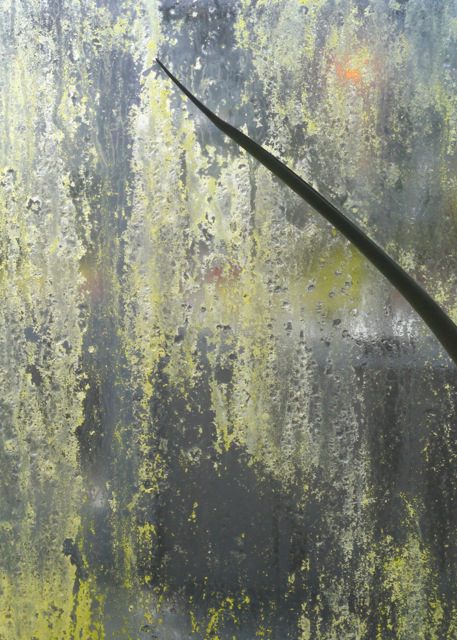In my workshop on abstract photography, Going Abstract, we focus on how colour and visual elements express emotion. Our purpose is to show the essence of a subject or scene.
Fern Berman is a photographer who creates abstract art from the decay happening all around her. She reflects this philosophy of essence. After observing a scene for months, Berman only clicks the shutter when the light, colour and composition come together to reveal its soul or essence.
“I feel that everything has an energy and a soul, and that’s what I’m trying to capture,” she says. Her compositions hone in on a patch of a worn stucco wall or loose flecks of paint on a rusting car door. She may ponder a subject for months before photographing it, she says, but doesn’t reveal its identity. “I want people to stop and look at the photograph, contemplate it, stand back and settle into it like a painting,” she says.” ~ Cathy P. Ross, Connecticut Magazine
Last week, I viewed an Ansel Adams exhibit and a quote from that exhibit added another dimension to my views on abstract art and photography in particular. Now, we don’t often think of Adams as an abstract photographer but many of his closeup views are abstract in nature.
“I prefer extract (rather than abstract). For photographic compositions, I think in terms of creating configurations out of chaos.” ~ Ansel Adams
Abstract photography is different from painting and the word “extract” fits very well. But, it was “creating configurations out of chaos” that stuck with me. Chaos is defined as “complete disorder or confusion.” As photographers, we see a subject and sometimes the scene around it can look quite chaotic. Through the way we compose, deciding what should be in and out of the frame, we can create the configuration that highlights our subject best.
By looking closely, we move beyond the confusion to the essence, creating order out of the confusion.
Photographer Mick Victor creates abstract art from graffiti in downtown L.A., and he says something similar.
“I’m trying to find some order in the chaos. Not because I need it, not because I think the viewer needs it, but because that seems to be the most beautiful way to see chaos. It’s as if all the pieces sort of sit down in their own corner, at just the right angle to each other, then it’s interesting to me.” ~ Mick Victor, Art Unexpected

Interesting thoughts and concepts from other people. I heard Mick Victor’s feelings about Graffiti and how they changed when he realized they were often expressing anger.I have not fallen in love with Graffiti, but I am open to hearing how it makes others feel. I have though, learned to love abstracts and the emotions they evoke.
I know what you mean, Sandra. I was intrigued by Mick’s thoughts on several different people expressing on the same wall and here he was creating his own new piece of art with his camera by extracting from all of them together.
KIm: The word “chaos” has a special meaning in the world of science and complex systems. The science of “Chaos”: means finding order within an apparently random collection of objects or systems. It does not mean “complete disorder or confusion.”, as you mention. Perhaps an unfortunate choice of words by western science. I mention this because this scientific definition fits very well with what you’ve mentioned in your post. In particular Ansel Adam’s definition of chaos where he searches for order out of confusion.
Thank you for this post !!!!
Thank you for your comment, Bill. Yes, the definition of chaos I mention here is the dictionary definition, what most people think of as chaos. I think what you are referring to is “chaos theory,” the science of finding underlying patterns or order in seemingly random things or events. I believe that this is highly applicable to photography and is what Mick Victor is doing in his work.
Chaos is part of the creative process, usually signally something new emerging.
I have never run across Adams that quote before – thanks for sharing. Yes, without putting it into those words – with my framing, I do try to create order from chaos – distill the complicated to the simple – find the geometry.